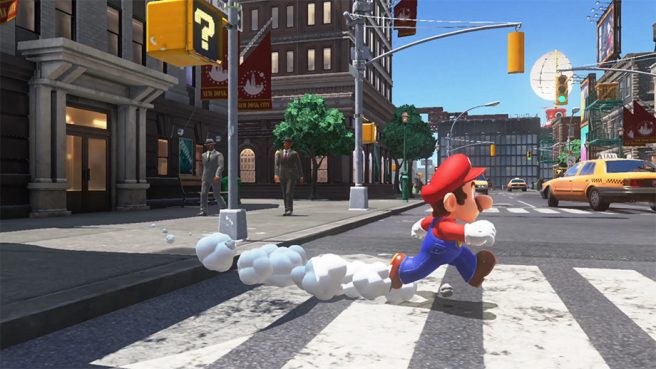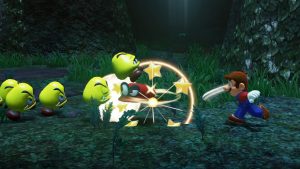Super Mario Odyssey dev on blending the game’s art styles and visual effects
In a posting on Nintendo’s Japanese recruitment site, Super Mario Odyssey VFX lead artist Junki Ikeuchi delved into the game’s visual effects.
The team sought to create cohesion between the effects and the different art styles. Ikeuchi spoke about how “ideas were taken from both themes and blended together.”
Here’s our full translation of Ikeuchi’s piece:
Creating “possibility” in a game’s world
Effects are like glue
Before the release of Super Mario Odyssey, we made an announcement trailer for the game where Mario leapt from a manhole and ran around a CG New York-like city. The concept of the video was to have an animated Mario contrasted against a realistic, lifelike cityscape. As the effect designer on the project, this created many challenges for me.
When Mario runs in Super Mario Odyssey, a small white cloud of smoke appears under him. Senior colleagues of mine often say “effects are like glue” that also hold things together when things in the game interact with each other. When Mario throws his hat and it hits an enemy, things like stars pops up to visually let you know that you’ve hit the target.
When Mario interacts with the ‘real’ world, the big problem was choosing which of the two art styles the visual effects should resemble. Should we choose an effect that resembles the animated Mario? If so, it wouldn’t match the realistic city, and the same could be said for the reverse. To solve this problem, ideas were taken from both themes and blended together.
The moment the screen takes over

Take for example, a waterfall in the middle of the wilderness, which has a realistic splashing effect. But when when Mario hits something, cutesy stars pop out instead. We didn’t want every character in the game to have the same effects. If a dragon breathes out fire, the fire gets more realistic the further away it gets from Mario and we kept that design choice in mind when making all the effects across all stages in the game.
Effects design may seem simple when compared to character design, but the technology allows for more unique expression. Implementing the technology, however, is not something a designer can do alone. You need help from programmers to help apply the ever-evolving technology to effects, and we had a lot of help with this in Super Mario Odyssey.
The disintegration effect when Mario captures an enemy is one such example. It was a joint effort with the programmers and is an example of how technology can be used successfully.
One of the best things about this job is that we can add a single effect to allow what’s happening on screen can take center stage. In a forest stage, adding mist creates a more natural look. Or if from outdoors you see a picture of a cherry blossom tree – it is beautiful on it’s own, but what happens if you add a wind effect into it? The context of the picture changes and it depicts the progression of time. Effects not only glue things in the game together, but they’re something additive to the world. The job of effect designer is not just to make effects but make the game feel more ‘real’.
Super Mario Odyssey originally released for Switch in October 2017.
Big thanks to Simon Griffin and Kim Louise Davis for contributing to this post.



